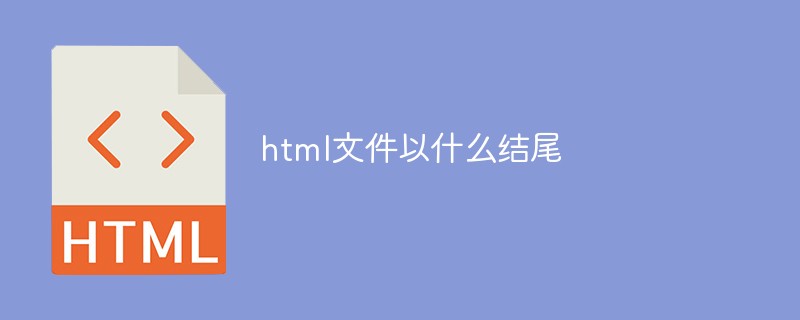Home >Web Front-end >HTML Tutorial >What does the html file end with?
What does the html file end with?
- 青灯夜游Original
- 2021-01-11 17:54:037850browse
html files end with the "73a6ac4ed44ffec12cee46588e518a5e" tag. The "100db36a723c770d327fc0aef2ce13b1" tag is the outermost element in an HTML document and is a container for all other HTML elements (except the "1a309583e26acea4f04ca31122d8c535" tag); "100db36a723c770d327fc0aef2ce13b1" and "73a6ac4ed44ffec12cee46588e518a5e" Tags define the start and end points of an HTML file.

The operating environment of this tutorial: Windows 7 system, HTML5 version, Dell G3 computer.
Related tutorial recommendations: html tutorial
100db36a723c770d327fc0aef2ce13b1 tag tells the browser that this is an HTML document. The
100db36a723c770d327fc0aef2ce13b1 tag is the outermost element in an HTML document, also called the root element.
The100db36a723c770d327fc0aef2ce13b1 tag is a container for all other HTML elements (except the "1a309583e26acea4f04ca31122d8c535" tag).
Example: A standard basic html format, blank page
<!DOCTYPE html> <html> <head> <meta charset="utf-8"> <title></title> </head> <body> </body> </html>
Among them, the page content is between 6c04bd5ca3fcae76e30b72ad730ca86d36cc49f0c466276486e50c850b7e4956
Description:
1a309583e26acea4f04ca31122d8c535 declaration is located at the frontmost position in the document, before the 100db36a723c770d327fc0aef2ce13b1 tag. The
1a309583e26acea4f04ca31122d8c535 declaration is not an HTML tag; it is used to tell the web browser which version of HTML is used for the page.
For more programming-related knowledge, please visit: Programming Teaching! !
The above is the detailed content of What does the html file end with?. For more information, please follow other related articles on the PHP Chinese website!

